Foam for the Holidays
Unwrapping the mystery of a Styrofoam Santa in our collections.

Unwrapping the mystery of a Styrofoam Santa in our collections.
As I rounded the corner in one of the Science History Institute’s storage areas one afternoon, I was startled by what appeared to be a person standing in the corner of the room. Upon closer inspection, I realized that this wasn’t a human, but a large, nearly 4-foot-tall Styrofoam sculpture of a rotund figure painted red and white.
It was undeniably Santa Claus.

While I am currently the assistant collections manager, at the time I wasn’t involved with new donations to the museum collections, so I was immediately curious as to why we now possessed a holiday decoration.
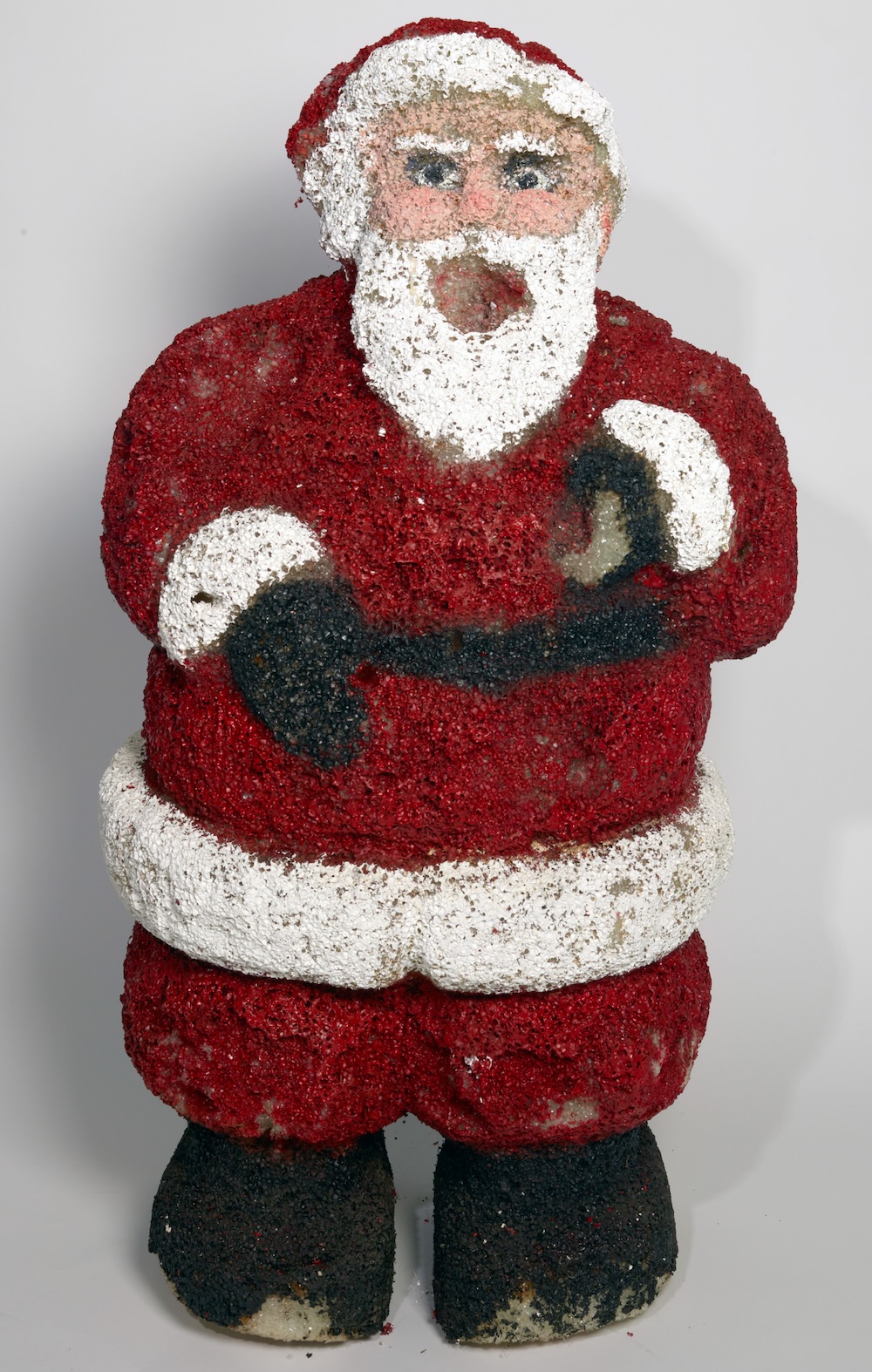
The obvious connection between the Institute and this Santa is the material. Invented in the 1940s by Ray McIntire, a research engineer at the Dow Chemical Company, Styrofoam was a revolutionary plastic product, for better or worse. For more historical context, Clay Cansler, editorial director of our Distillations magazine, discusses the lasting impact of Styrofoam—or polystyrene—in this article.
But why do we have this particular Santa? There must be better, and smaller, examples of Styrofoam out there for us to collect, right?
As it turns out, this Santa’s history with Dow goes beyond its material. The Institute’s archives contain a photograph of Ray McIntire with Styrofoam Santa from the late 1980s, perhaps taken at a staff holiday party or similar event. The Santa in the photograph has a slightly different face, but you can tell it’s the same sculpture by the hole in his right sleeve cuff.
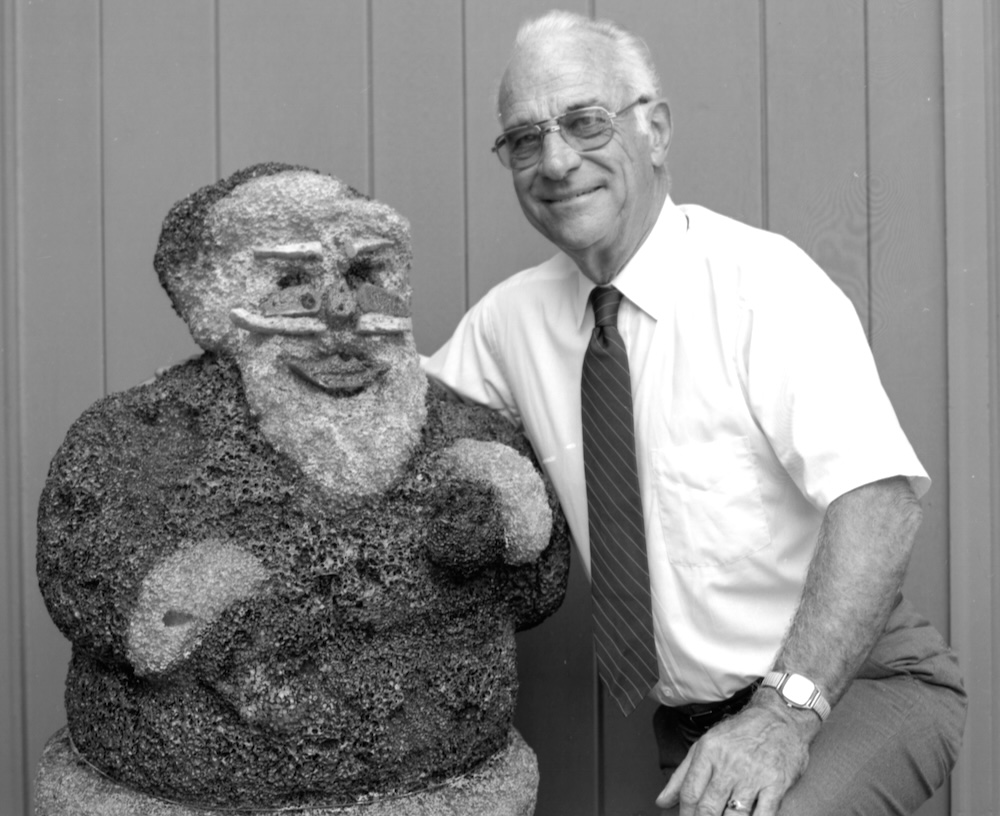
According to the McIntire family, who generously donated the sculpture to us in 2024, Santa was kept in their family, but his face was modified over the years and repainted. Styrofoam is very pliable and easy to carve after all—hence its large presence as a craft material—and Santa most likely got a face lift as interpretations changed.
So the mystery of why we have a Styrofoam Santa Claus was solved. But it made me wonder if we had other examples of Styrofoam holiday decorations in our museum collections, or maybe even more pictures of Santa in the archives.
I hunted through museum storage, and with the help of Jahna Auerbach, our digital collections librarian (who also graciously fast-tracked digitizing Styrofoam Santa), I combed through the Dow Chemical Company Historical Image Collection. While I was mildly disappointed that we didn’t unearth a long-hidden Styrofoam jack-o’-lantern or Easter bunny, Jahna and I did find some fun photographs of other Christmas-related Styrofoam objects. Alas, it looks like the only image we have of Santa is the one with Ray, but there are a couple images of Styrofoam Christmas ornaments, likely staged for advertisements.
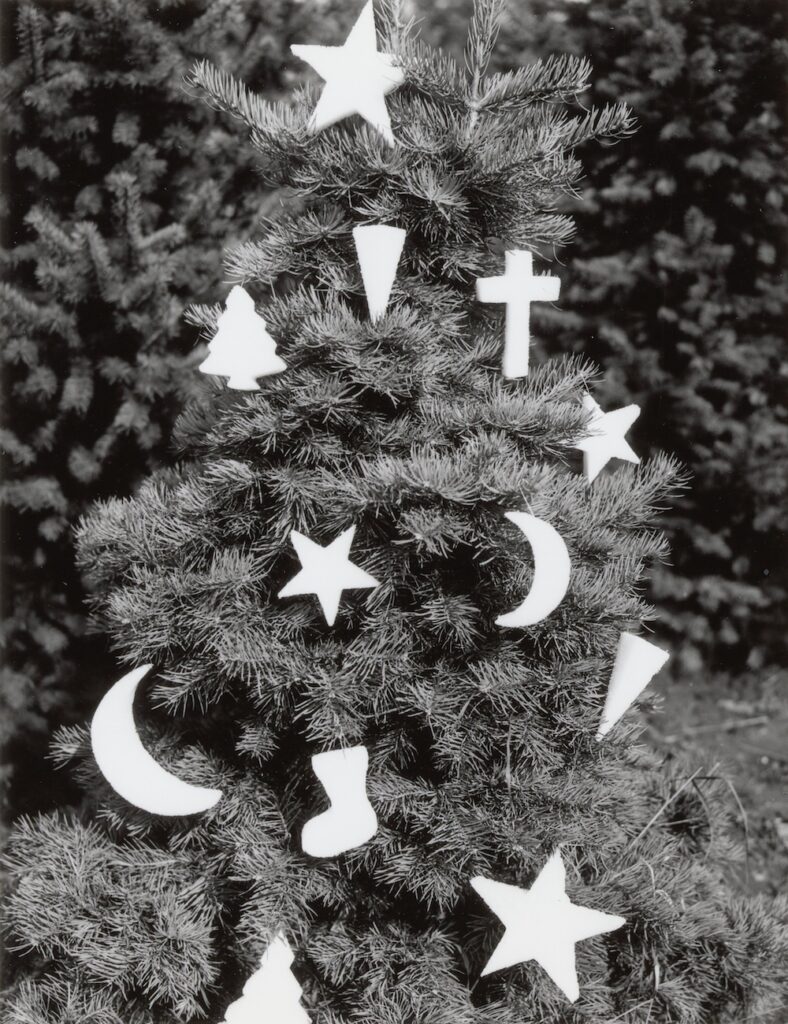
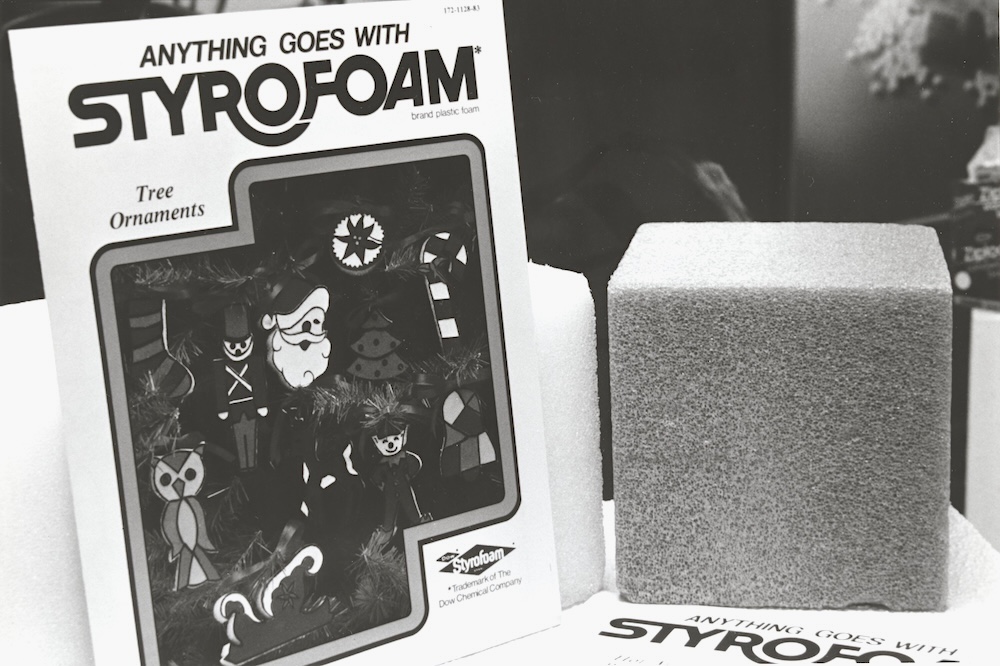
We have another photograph of an advertisement showing how other various winter holiday decorations could be made from Styrofoam. These decorations were not produced by Dow, but by other companies who likely purchased Styrofoam from them. Here, it looks like Dow was focused on selling the lightness of Styrofoam, since the ad includes an image of a woman lifting a Styrofoam “log” over her head.
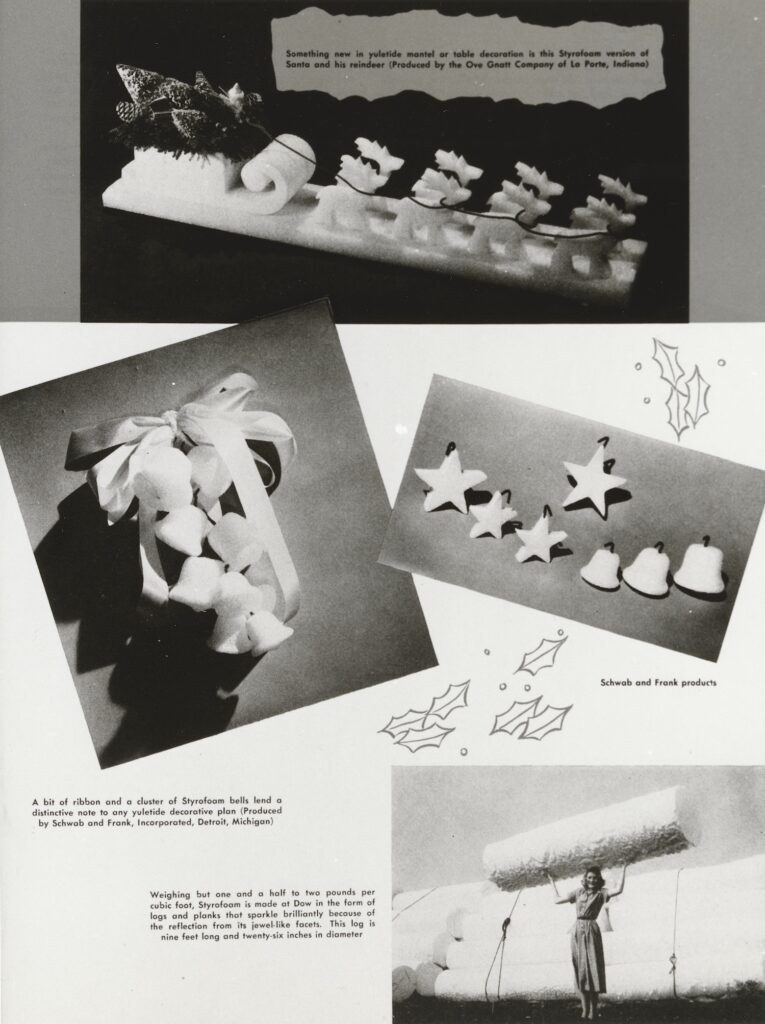
Lastly, and one of my favorites, is a Christmas tree built from various Styrofoam packing products and most likely located in a staff breakroom at Dow. The tree and the star were constructed from Styrofoam planks, and the “snow” was made using packing peanuts. It even looks like thinner Styrofoam sheets were used to create the tree’s skirt.

What started as a collections mystery turned into a delightful dive into the Dow Chemical Company Historical Image Collection, which offered a small glimpse into the corporate culture of Dow and its employees in the mid- to late-20th century. Santa himself was representative of this culture; I was unable to find any information saying he was a commercially available product, meaning he was made specifically for Dow employees. Maybe one of them even carved him! This fact, in addition to his construction material, solidifies Santa’s presence in our museum collections. Perhaps in the future I’ll write a blog post about the many staff picnics, retirement parties, and golf outings recorded in the image collection.
Happy Holidays!
Featured image: Detail of Styrofoam Santa, a Santa Claus figurine carved out of Styrofoam, after 1960–before 1988.
New World ingredients in Old World dyes.
How a Jewish scientist’s intellectual property became a lifeline in his journey from Nazi Europe to the United States.
A fraught collaboration ushered a medical classic into the world.
Copy the above HTML to republish this content. We have formatted the material to follow our guidelines, which include our credit requirements. Please review our full list of guidelines for more information. By republishing this content, you agree to our republication requirements.